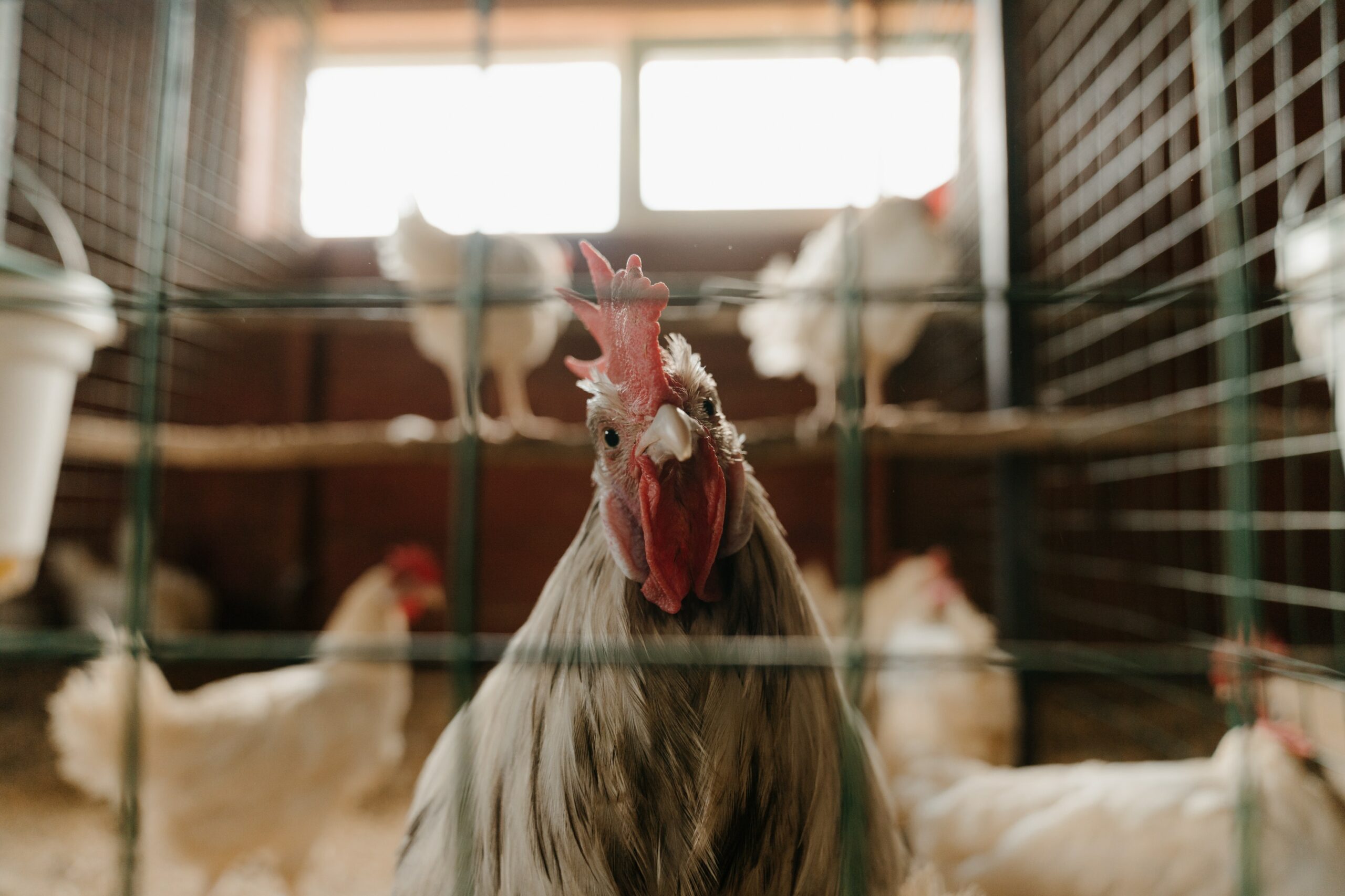The production of meat for human consumption typically involves the use of broiler chickens in breeding programmes within the poultry industry. Because broiler chickens are bred to mature at a younger age and produce more meat per animal, they are frequently used in the production of meat for commercial purposes.
Ross

Ross chickens are known for their fast growth and high meat production. (Source: agribusinesszambia.com)
The rapid growth and high meat yield (high meat-to-bone percentage) of Ross chickens have made them a popular broiler chicken breed. Raised for their meat, they are a common commodity in industrial poultry operations.
Ross chickens are highly sought after for their high protein, low fat, exceptionally tender, and juicy meat. When a lot of high-quality meat needs to be produced quickly, many farmers turn to these chickens.
Ross characteristics and growth rates
The Ross is your standard white chicken with a red comb. The tail stands erect and is brilliant white. Ross’s legs are relatively strong and sturdy, allowing them to walk and maintain an active lifestyle. Thigh meat to chest meat is in good proportion. The average weight of a day-old Ross chick is forty-two grammes. At forty-one days of age, these chickens can reach their maximum live weight of 2,2 kilogrammes.
Ross chickens are popular among both smallholder farmers and commercial poultry operations due to their large size and docility. Poultry farmers around the world appreciate Ross chickens not only for their meat, but also for their resilience and versatility in a variety of climates.
Cobb

The Cobb chicken was developed in the United States. (Source: poultryworld.net)
The meat production and maturation rate of Cobb chickens are unparalleled. Because of their low feed waste, they are frequently used for industrial meat production. Cobb chickens are highly sought-after due to the popularity of their meat.
Cobb characteristics and growth rates
A Cobb chicken can reach a 2 kilogrammes live weight in only forty-two days. All the Cobb’s feathers are white. The white tails and heads of males and females are identical. The comb and wattles are a bright pink colour, and the comb is of the single-type variety.
This bird lacks foot feathers and has a yellowish beak and legs. The Cobb is capable of low-density feed conversion. This breed is known for its efficiency, even when fed a cheaper diet. The Cobb is reliable and productive, no matter the season or climate. The good temperament and activity levels of Cobb chickens are among the lowest of all chicken breeds. They perform well in regular, temperature-controlled sheds. To ensure proper development, these birds should not be allowed to free-range but rather fed a commercial diet.
Hubbard

The varieties found in Hubbard are white, red, brown, black, grey, striped, and multi-coloured. (Source: hubbardbreeders.com)
Hubbard chickens are widely used in the meat industry because of their rapid growth and large size. In addition, they have a reputation for being docile and friendly, making them ideal for small flocks in the backyard. There is evidence that this breed is more disease-resistant than others, and that it can thrive in free-range conditions.
Hubbard chickens have a high feed-to-meat conversion ratio, meaning they turn their food into meat in an efficient manner. This makes them a more environmentally friendly choice for commercial meat production. Hubbard chickens are bred for their tasty and tender meat, which is used in restaurants and homes alike.
Hubbard characteristics and growth rates
Hubbard chickens’ range in size from medium to large and are characterised by a round, plump body, broad wings, and a long, full tail. Its comb and wattles are red, and its feathers are typically white or brown, though other colours are possible.
The average weight of a broiler chick is only 55 to 70 grammes. These chickens are raised as free-range broiler chickens on industrial-scale poultry farms. They typically gain an average of 1,8 to 4,5 kilogrammes in weight when fully grown. Even though they are not great layers, a Hubbard hen can yield 200 eggs in a year. Hubbard chickens
reach their full growth potential between seven and fourteen weeks of age.
Arbor Acres

An Arbour Acres chicken is known for its large size and good meat quality. (Source: arboracres.co.za)
In addition to their rapid development and abundant meat production, Arbour Acres chickens also make excellent use of their feed. Their meat is tender and flavourful because of their developed breast muscles and low fat content. Because of these qualities, they are frequently used in industrial meat production.
The breed’s rapid growth and excellent feed conversion make it ideal for mass meat production. The Arbor Acres chicken is popular for backyard flocks not only because of its useful characteristics but also because of its placid temperament and docile nature.
Arbor Acres characteristics and growth rates
The Arbor Acres breed is characterised by a round, plump body and short, stocky legs. Their shanks have a good amount of meat on them relative to the amount of bone, and their legs are a bright yellow. This breed is distinguished by a small, red wattle and a single comb.
While the Arbor Acres is not the flashiest chicken, it is a good choice for those looking to raise chickens for meat because of its dependability and versatility.
Arbour Acres achieves a remarkable 2,7 kilogrammes of live body weight gain in the first six weeks of life. Due to genetic improvements, their maximum weight at eight weeks is 2,9 kilogrammes. Arbor Acres hens do not lay eggs like native chicken breeds.
References
Azeem, S. (2022) Chicken breeds. ZPoultry. Available at: https://zpoultry.com/category/chickenbreeds/









